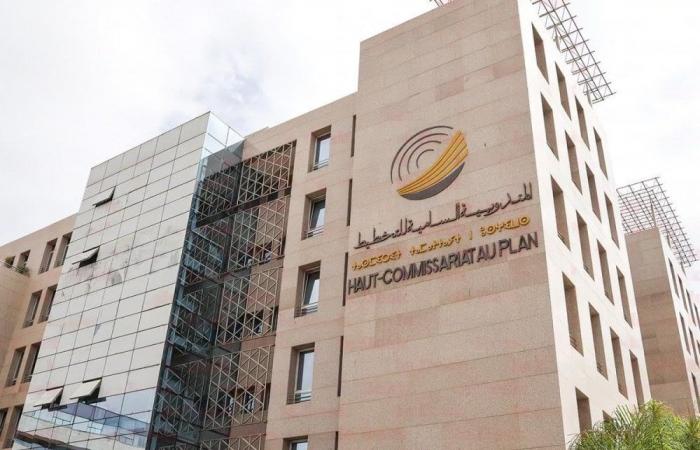Pulled by the domestic demandthis growth was carried out in a context of controlled inflation and an improvement in the financing capacity of the national economy.
Slowdown in economic growth in Morocco
The added value of primary sector in volume, seasonally adjusted, contracted by 4.3% in the first quarter of 2024, after recording an increase of 1.7% in the same quarter of the previous year. This decline resulted from the sharp decline in the value added of agriculture by 5% instead of an increase of 2.1% and from the increase in that of fishing by 10% instead of a decrease of 4.8%.
For its part, the added value of the secondary sector achieved an increase of 3.6% instead of a decrease of 0.4% in the same period last year. This was the result of the slowdown in manufacturing industry activities to 2.1% instead of an increase of 3% and the increase in added values:
• the extraction industry by 17.7% instead of a decrease of 12.1%;
• electricity, gas, water, sanitation and waste by 3% instead of a 3% decrease;
• construction and public works by 2.5% instead of a decrease of 3%.
Furthermore, the added value of the tertiary sector recorded a slowdown in its growth rate from 6% in the same period of the previous year to 3% in the first quarter of 2024. It was marked by the slowdown in the activities of:
• Financial services and insurance at 3.9% instead of 7.3%;
• Research and development and services provided to businesses at 3.6% instead of 4.3%;
• Transport and storage at 3.4% instead of 8.7%;
• Education, health and social action services at 2.9% instead of 4.2%;
• Real estate services at 2.1% instead of 2.7%;
• Accommodation and catering at 1.9% instead of 55.8%;
• Information and communication at 1.3% instead of 3.1%;
and the increase of those:
• services provided by general public administration and social security by 3.4% instead of 3.1%;
• trade and repair of vehicles by 2.7% instead of 1.4%.
In total, the added value of non-agricultural activities saw a slowdown in its growth rate from 3.9 in the same quarter last year to 3.2%.
Under these conditions, and taking into account the 5.5% increase in the volume of taxes net of subsidies on products, the Gross Domestic Product (GDP) in volume recorded a growth of 2.5% in the first quarter of 2024 instead of 3.9% a year earlier.
Control of inflation and clear improvement in domestic demand
At current prices, GDP grew by 3.8%, resulting in a rise in the general price level of 1.3%.
The domestic demand increased by 3.6% in the first quarter of 2024 instead of 0.3% in the same quarter of the previous year, with a contribution to economic growth of 3.7 points instead of 0.3 points a year earlier.
This is how the consumer spending Final consumption of households increased by 3% instead of 0.9%, with a contribution to growth of 1.9 points instead of 0.6 points. Final consumption of general government, for its part, showed a slowdown in its growth rate, falling from 4.5% in the same period of the previous year to 3.9% in the first quarter of 2024 with a contribution to growth of 0.7 points instead of 0.9 points.
Furthermore, the growth rate of gross investment (GFCF, change in inventories and net acquisition of valuables) increased by 4.6% instead of a decrease of 5% in the first quarter of 2023, thus contributing positively to growth by 1 point instead of a negative contribution of 1.2 points.
In terms of foreign trade in goods and services in volume, both exports and imports recorded strong increases during the first quarter of 2024. Thus, imports of goods and services showed an increase of 9.5% instead of 7.8%, with a negative contribution to growth of 4.1 points instead of a negative contribution of 3.7 points, during the same period last year. For their part, exports increased by 7.3% instead of 18.6%, with a contribution to growth of 3 points instead of 7.4 points a year earlier.
In this context, the foreign trade of goods and services made a negative contribution to growth, standing at 1.1 points instead of a positive contribution of 3.6 points during the first quarter of 2023.
Improving the financing capacity of the national economy
With an increase, at current prices, of 3.8% of the GDP instead of 11.6% in the first quarter of last year and the decrease of 6.4% of the net income received from the rest of the world, the growth of the gross national income available has seen a sharp slowdown, falling from 12% in the same period last year to 3.1% in the first quarter of 2024.
Taking into account the 4.5% increase in national final consumption in value instead of 8.9% recorded a year earlier, national savings stood at 24.3% of GDP instead of 25.6%.
Gross investment (GFCF, change in inventories and net acquisition of valuables) represented 23.7% of GDP instead of 25.5% during the same quarter of the previous year. This releases a financing capacity of 0.6% of GDP in the first quarter of 2024 instead of 0.1% of GDP in the same period of the previous year.






